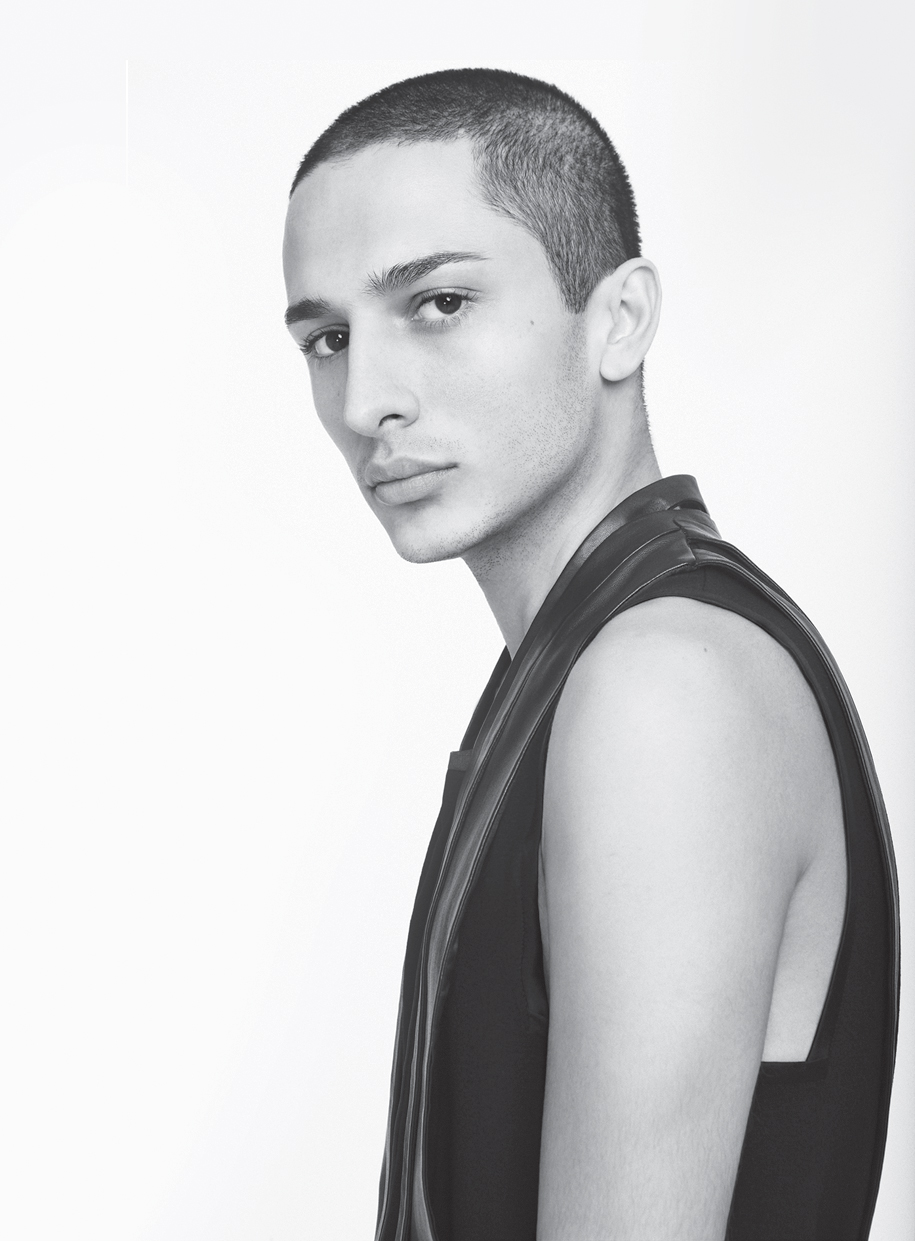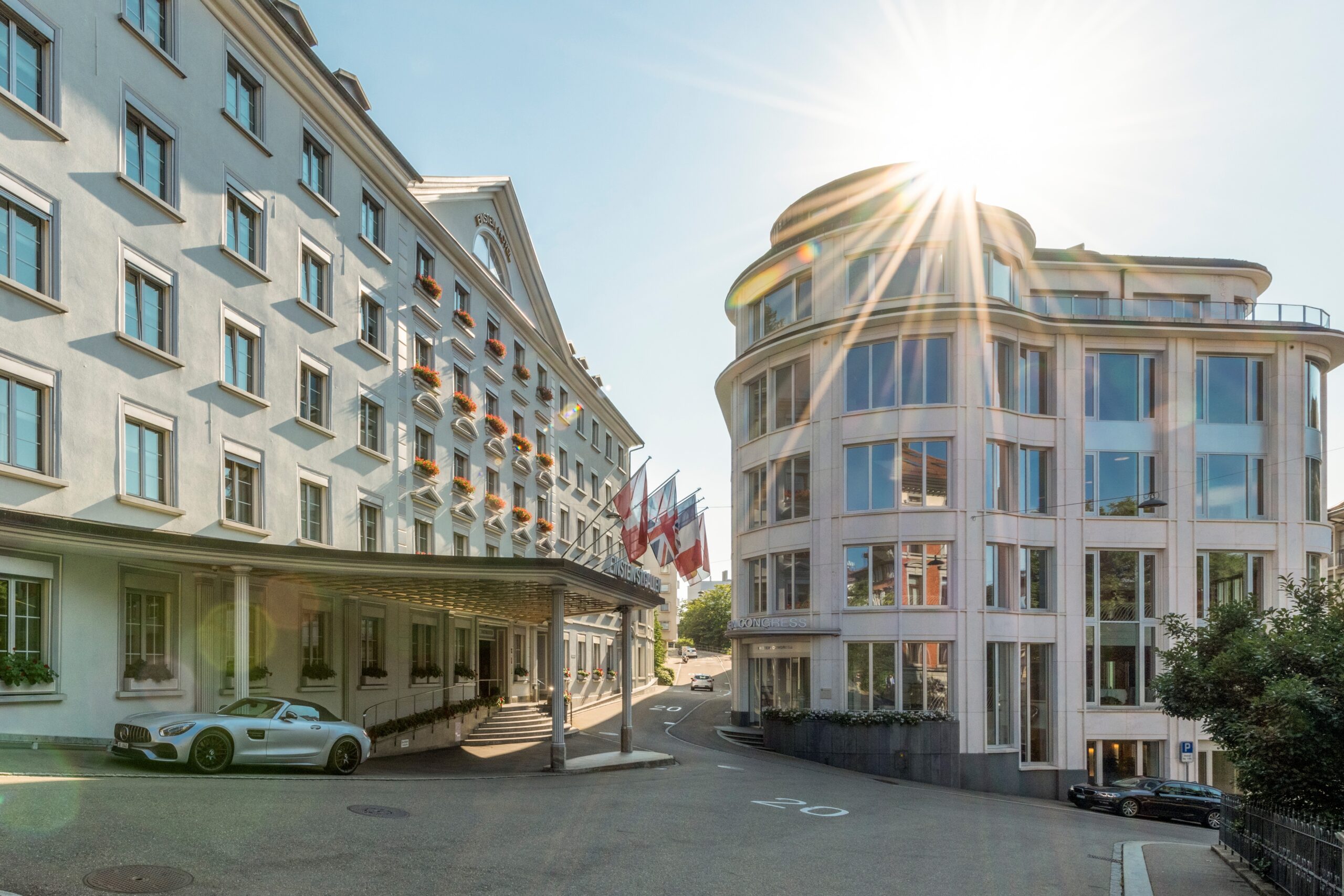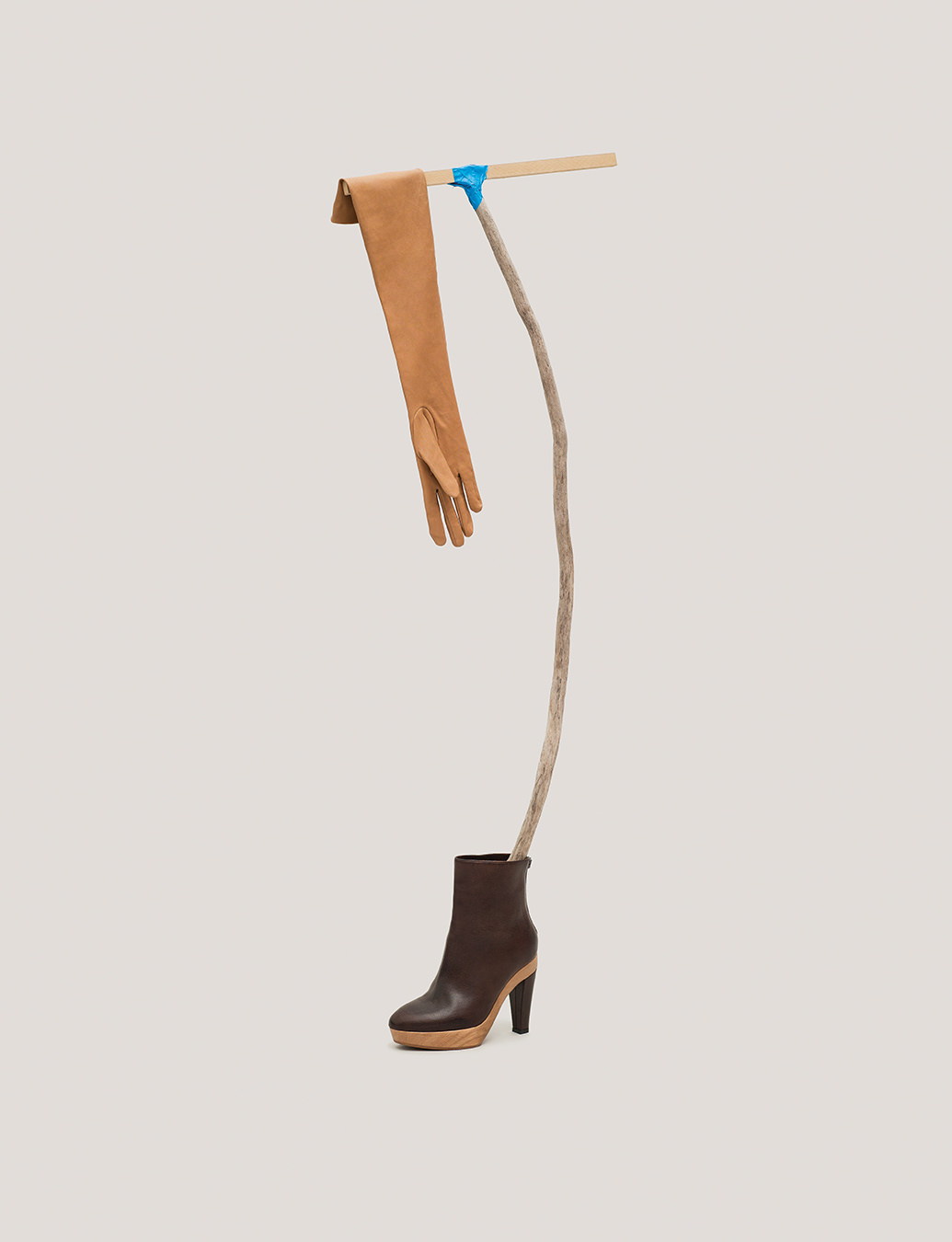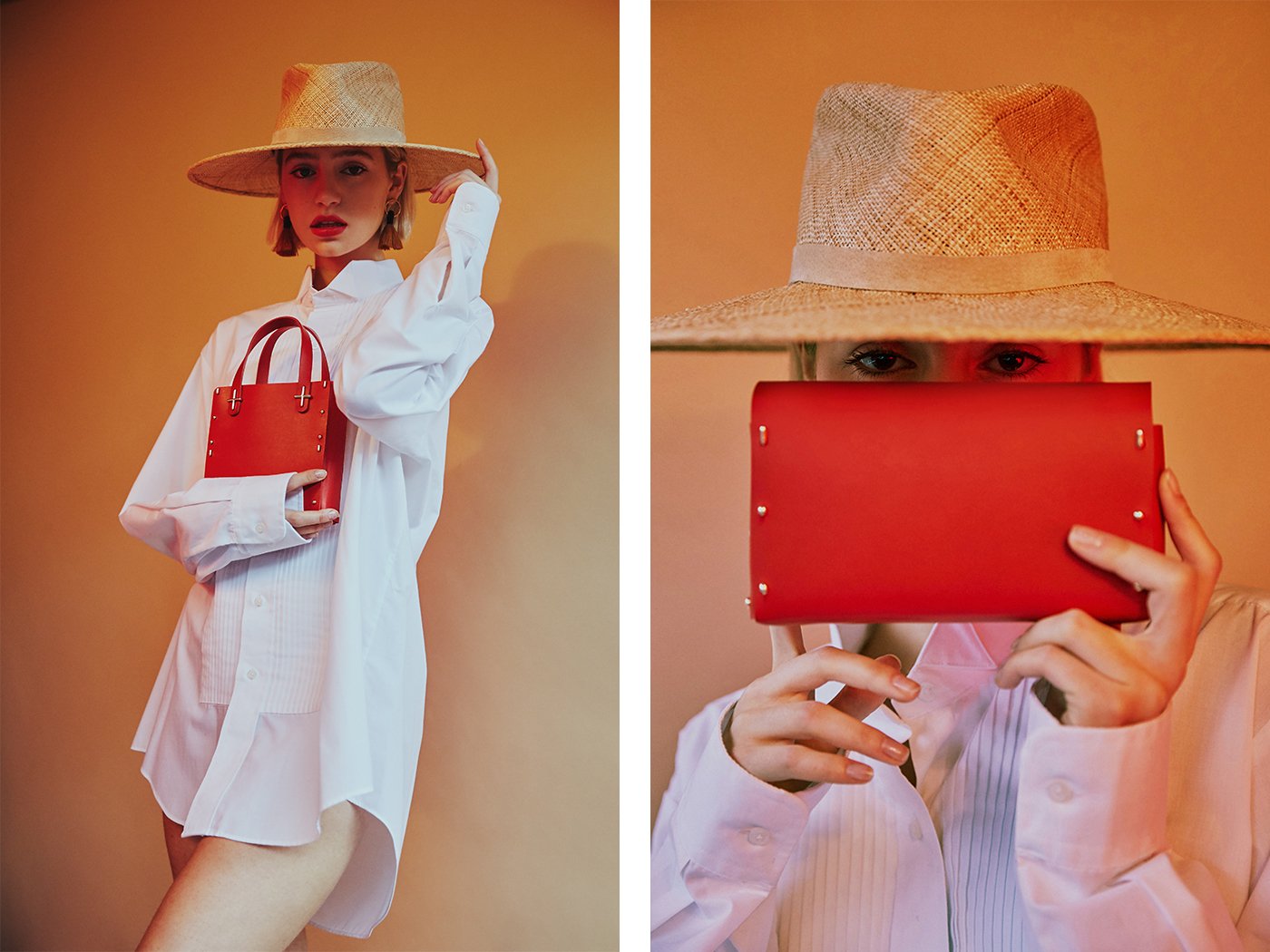Salvatore Parasuco
Jean-ius.
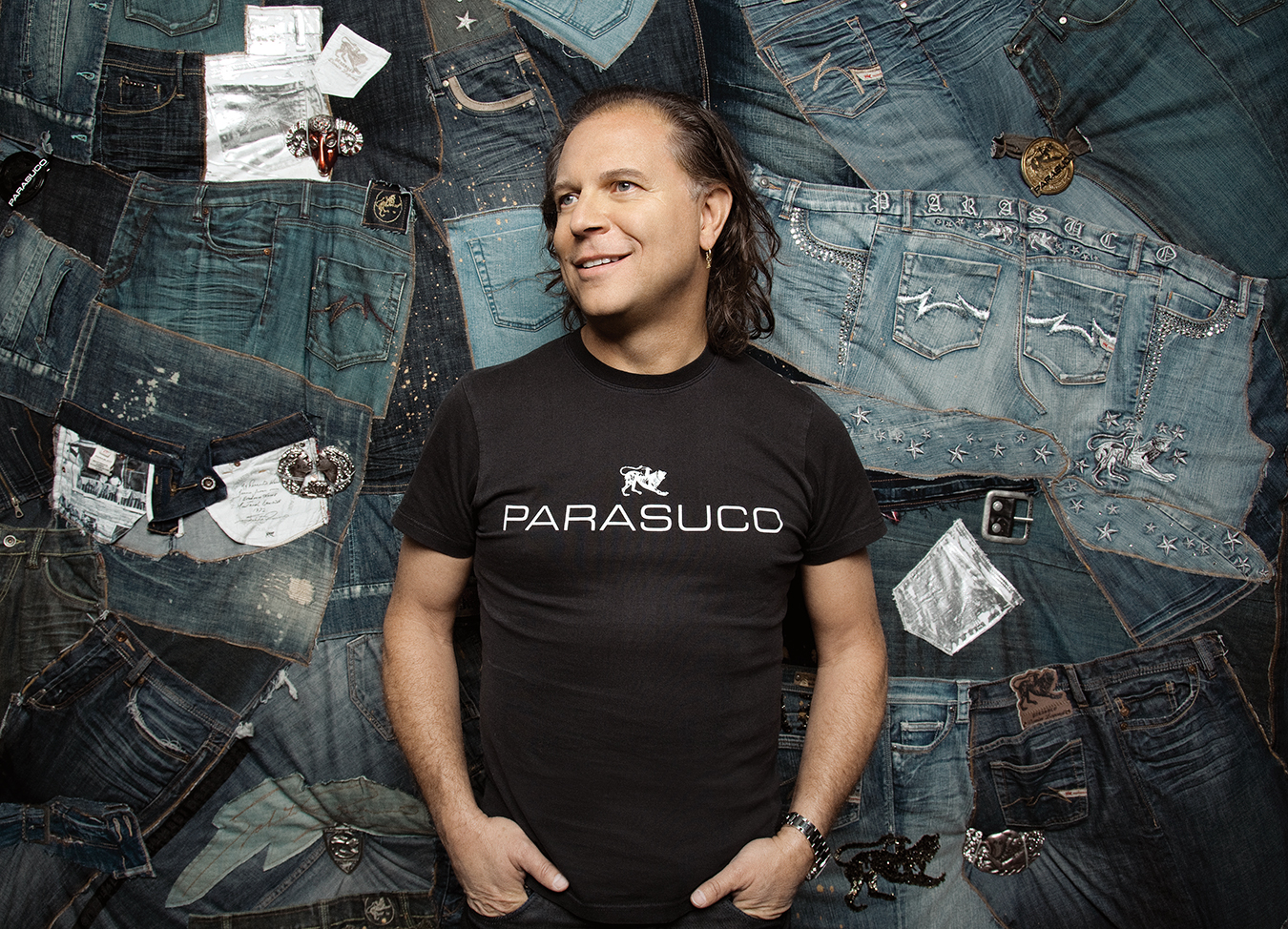
Parasuco’s Montreal headquarters are located in what’s more or less the middle of nowhere. You drive north past the city limits, turn a corner, then suddenly the building is there like a slap in the face. Framed by robust Roman columns, the white stand-alone structure houses 55,000 square feet of office and warehouse space; its company name looks as subtle as a cinema house marquee. The owner, founder, and namesake of this fashion empire (which is feting its 35th anniversary this October) is Salvatore Parasuco. His titanium grey Ferrari (a gift from his wife, Rosina, for his 50th birthday in 2003) is parked askew in the driveway, as if it just zoomed in.
With Mickey Rourke’s swagger and greased-back long locks, the Italian-born entrepreneur examines the world through designer eyewear and sports a signature look of rebel rock-star jeans, crocodile shoes, and a T-shirt that even his PR director admits is “sometimes a little too tight.” A dramatic curving staircase leads into his office, a room characterized by an organized paper mess. Behind a magnificent table, Salvatore leans back, swivels his chair, and asks, “How many international fashion brands can you name that come from Canada?” Without missing a beat, he answers his own query: “Not a lot. And there’s a reason for that. Canada does not have the ingredients to make a very successful fashion company.”
In contrast, then, Parasuco’s success is something of an anomaly. The trendy brand has graced the derrières of famous celebs like Chris Daughtry, Zac Efron, and Jessica Alba. If these names don’t ring a bell, you’ve likely never set foot in one of the 10 retail locations in Canada, or maybe you lump Parasuco erroneously with Diesel, a related but very different denim label based out of Italy that has a similar youth-oriented market. Despite Parasuco’s string of stores and a thriving distribution across Canada, the United States, Europe, and Asia, the local denim-cum-lifestyle brand still flies curiously below the radar. “It’s because Canadians are not good enough for Canadians,” whispers Salvatore, a Canadian citizen. “If you go to Italy, Russia, Hong Kong, Japan, or Korea and speak about Parasuco, they know.”
The Italian moniker surely christens the label with an overseas aura. But Salvatore insists, “It’s not only the name, but our European look. We’re a cross between Italian style and North American upbringing. What we realized is that sometimes we may have the right product in the wrong country. Here, we always get people telling us we’re too fashion forward, too this, too that. We got lucky though—we got discovered by an Italian guy in 1999 who fell in love with our collection and brought it to Italy.” The gentleman in question took a pair of jeans retailing locally for $150 and sold it for $1,000 abroad—and then went on to sell 15,000 pairs.
According to Salvatore, the Canadian press has not been very supportive either. When he opened a flagship in New York, The Globe and Mail apparently said there wasn’t enough CanCon in the story. “The media doesn’t do enough to support their own,” he says. He uses the music world as an example. “The CRTC was created to force Canadian radio stations to play Canadian content. If they didn’t do that, they wouldn’t play Canadian content because we think it’s not good enough because it’s our own. Meanwhile, in the past 15 to 20 years, how many Canadian singers are in the top 10? Quite a few.
“That’s what I love about America,” he continues. “They push anything that’s American in the media. I was a little taken aback when a month ago there was an article in the Montreal Gazette about boyfriend jeans. We made that style in the nineties. We made them last year. How come they didn’t talk about our jeans? They chose an American.”
There are 80 full-time employees under the Parasuco roof, 108 employees at the retail level, and thousands indirectly who work in various warehouses. “When will Canada give us some recognition? We’re totally self-financed. We never got any help from the government or anybody,” says Salvatore. “Our friends at Dsquared² don’t create in Canada, they don’t create Canadian jobs, and they get a star on Canada’s Walk of Fame.” (These friends are none other than identical twins Dean and Dan Caten, originally from Willowdale, Ontario, who operate their popular high-end ready-to-wear line out of Milan, Italy.) Salvatore then points to a black-and-white portrait of himself in L’Uomo Vogue under the title “The New American Style Dream” and says, “That’s me.”
Rising from poor immigrant beginnings, he and his family moved to Canada in the late 1950s in hopes of a better life. Neither of his parents spoke English or French; his father, a Second World War veteran, worked as a labourer “doing any job he could get.” Salvatore admits he is indebted to his parents, both of whom he recently lost.
Salvatore credits his father for his business acumen and tells the story of a shopping excursion in 1968 for a pair of Beatle boots (read: heeled shoes inspired by the style in London). “My father and me went to a store on St. Laurent Street, which was a dumping ground for factory seconds. The boots I wanted were $20. My father started negotiating with the guy and offered him $1.50. I was so embarrassed, but my father said to me, ‘Don’t worry,’ in Italian. The old man who owned the place said, ‘Okay, I’ll give them to you for $10.’ When I saw that, I thought, ‘Wow.’ So I shut up. I saw this whole charade going on. We walked to the door, he called us back—finally I got the boots for $3.50.”
The young Salvatore was enlightened and inspired. When they went on to Jean’s Discount store, he got into the game and haggled a Montreal Canadiens duffel coat from $38 to $17.50. The owner of the store was impressed, and asked Salvatore for his phone number in case he needed someone to work. Coincidentally, the Parasucos had just installed their first telephone the week before. That became his first job in a retail store—mopping floors.
Soon enough, Salvatore was scooped up by Jean’s competition, and three months after that, at 16, he was both manager and buyer. “That’s when I started to use my design flair to choose stuff that the kids my age wanted. I would meet with the factory guys and say, ‘No, don’t put this pocket,’ or, ‘Make the rise lower’—and the jeans would fly!” At around that same time, his father was no longer able to work, so Salvatore started selling jeans out of his high school locker. He went to the principal and said, “Look, my dad’s in the hospital. I gotta make money. I want your permission to sell jeans. Either that or I gotta do like the other guys and sell drugs.” The result? “They let me sell my jeans,” says Salvatore. “Sometimes, I even made more money than the teachers.”
“Everyone has their own niche,” says Salvatore Parasuco, “and I don’t care if they copy me. I’ll start to worry when they stop copying me.”
By age 19, after a visit to his humble roots in Sicily (his family there are sheep herders) and a week of sensory overload in Rome, Salvatore came back to Canada with a plan, and opened his own store, Pour Les Deux. It was the breeding ground for Santana Jeans (Parasuco’s precursor, whose name was later nixed due to copyright conflicts with a company in the U.S.), and also where he met Rosina, a Montreal-born Italian with similar blue-collar spunk. Mrs. Parasuco reminisces, “Our high school was holding a fashion show and Sal had supplied—what else?—the jeans.” And although the two laugh, admitting that “We hated each other in the beginning,” a similar workaholic mentality connected the dots. In need of some extra cash, she convinced him that she could work with his male-only sales team—and despite some early resistance, she began supplementing her nine-to-five office gig with evenings at Pour Les Deux, plus disco DJing on weekend nights. It took 16 years for her man to pop the question (“I wanted to build my little empire first,” Salvatore pleads), but here they are today, two peas in a jean pod, and with two daughters—Alessia, 18, and Alanna, 14—to round out the lot. “We never have and never will forget where we came from. And that’s what keeps us going,” says Rosina. “The background. Nothing came on a silver platter. We try to make our kids understand that you gotta work for what you want.” The Parasucos often donate to charity; in one annual event, they give rides to sick kids in Salvatore’s sports car.
Handing over the throne to the next generation of Parasucos is a possibility still hanging in the air. Rosina says, “We’re starting to see that both girls have creativity, which could serve them well here in the future, but we’d want them to work somewhere else first.”
“We want them to suffer somewhere else first,” says Salvatore. “We’ve gotten into situations in our 35 years of history where we did sit back and let others do some of the work and then we had to go back and fix it. It’s not as easy as everybody dreams. You start your own business and then have people to run it, and the people who are capable of running it usually end up wanting their own business. You notice that? We’re in a bit of a delicate situation where we’re not big enough to work in a certain way, but too big to work the small way. That’s part of the journey, the growth.”
Over the years, Parasuco’s ascent has also served as a kind of Project Runway for homegrown talent, giving global experience to many of Canada’s best designers. “I’m a very, very, very good teacher,” Salvatore says. “With designers it’s very tricky because we need designers who evolve. It’s like the music business. You’re only as good as your next hit.” Philippe Dubuc, who worked with Parasuco in 1989 before eventually opening his own eponymous men’s boutique, says, “My first business trip to Hong Kong was with Salvatore. He has a lot of energy, no breaks. He’s also a fighter, and it’s because of this that he’s what he is now. He never takes no for an answer. Everything is possible.”
Andy Thê-Anh, another company alumnus who worked under Parasuco’s wing from 1997 to 2000, says, “I learned a lot from Salvatore, mostly about the business, that it’s not only the product but how to market it. Parasuco has vision. He knows exactly what he wants to do. I learned that type of determination from him. He also opened my eyes to see how designers in Italy, France, and New York work and brought me to that level. He told me to believe in my product, believe in what I’m doing and I will succeed.”
Granted, Salvatore is not the only Canadian with a flair for the blues. Montreal, a forerunner in apparel manufacturing, is also home base to many other denim labels, including Guido & Mary, Domino, Second, and Buffalo by David Bitton. “Everyone has their own niche,” says Salvatore, “and I don’t care if they copy me. I’ll start to worry when they stop copying me.” Without a university degree, much less an MBA or design school certificate, Salvatore contends that success has always been about logic—the most important element being “to get customers to come to the store.”
Rosie has learned to take her husband’s constant research in stride. “Other guys look at women’s butts to undress them,” says Salvatore, “and I look at women’s butts to dress them.” An Italian cosmetic surgery magazine once listed a pair of Parasuco jeans as one of the best backside lifts.
These simple motivations have inspired his many denim innovations since day one. “As far as I know, I was the first one to sell pre-washed jeans in Canada,” he says. In 1971, the key to the rising fad of blue jeans was to have the right shade. After hanging both a new and a used pair of jeans in the window, Salvatore started getting more inquiries about the used pair and knew he was onto something. “At that point, I took 12 pieces home and washed them with my mother. The next day was Saturday and we blew them out. So then I took 50 pieces home and put my parents in business—I paid them 35¢ apiece. We didn’t have a dryer so we had to hang everything outside. Because we lived in a tough area, my father had to stand guard all day. Seriously. We were eight people in that little house that had one bedroom and one bathroom. In the wintertime we were still washing jeans, and since we had no dryers we hung them over our beds. We’d wake up with red eyes because of the bleach.”
This do-it-yourself attitude paved the way to stretch denim in 1976 (“I was not educated enough back then to think of getting a patent”), stonewashed jeans in 1980, and sandblasted denim in 1986. He also claims ownership of the baby tee craze in Canada—with thanks to Sofia Coppola. “I was reading an article and she said she and her friends buy boys’ T-shirts at Sears. So it just clicked.”
These days, the constant innovator is experimenting with wine-stained denim, as well as expanding his collections into different retail directions, such as men’s suits. Says Rosina, “It constantly surprises me how people really want the whole kit-and-caboodle lifestyle from Parasuco. Customers came to us and said, ‘When are you gonna start doing men’s suits?’ And that’s all it took.” Currently, they are in talks to develop collections featuring handbags, satchels, and eyewear.
Catching on to what Dubuc agrees is a fashion-lifestyle trend, Parasuco’s next project is a boutique hotel in Toronto; Salvatore has already purchased the property (a retired bank on Yonge Street above Queen Street) and hired an architect, Lemay Michaud, the same brain behind the Montreal’s choice Hôtel le Germain.
Meanwhile, back at Parasuco’s think tank, he points to the company’s chimera logo atop the cathedral entrance: it’s a mythical Etruscan image of four beasts in one—a wolf’s lean physique with both a lion’s and goat’s head and a snake’s tail. It used to symbolize the company’s four main collections. Perhaps it will soon come to represent the four corners of the world. The newest campaign was shot in Vietnam with a Chinese model because, Salvatore whispers again, “Where do you think the next big market is?” Yet another question to which he already knows the answer.





